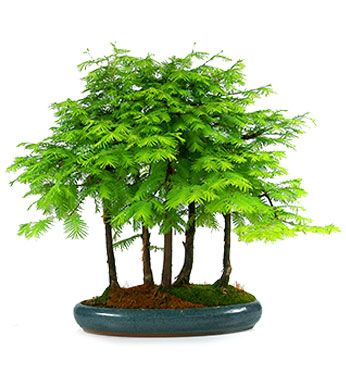Characteristics
Deciduous tree with reddish bark. Leaves ending in point, alternate, linear and arranged in two rows, pale green – yellow. male flowers forming long panicles.
Location
In the outside all year. Protect against extreme frosts in winter.
Watering
Abundant, especially in summer. Reduce watering when the tree has lost its leaves; tolerates some degree of water saturation of the substrate.
Fertilization
Spring and autumn, reduce the dose in the summer.
Re-potting
Every 2-3 years in early spring.
Substrate
100% Akadama or mixed with up to 30% of volcanic gravel. It is not an overly demanding plant in substrate quality.
Pruning and pinching
Pruning
From October to March, when the plant has no leaves. Cut the buds coming out at the base of the trunk.
Pinching
Throughout the growing season. The tender buds intersect generally with fingers, before they harden.
Wiring
Between the spring and summer. Remove ligatures when the shell begins to be affected. Do not wire recently re-potted trees (Wait 4 months of vegetative growth).
Curiosities
The genus Metasequoia has only one living species, Metasequoia Glyptostroboides, but there are other as fossils that were found in many areas of the northern hemisphere, from Axel Heiberg Island (North of Canada) to the West located at Badlands of North Dakota in the US.

